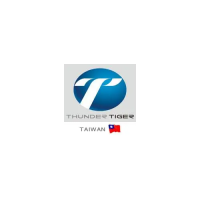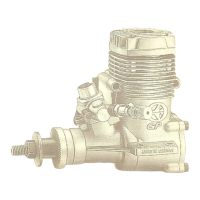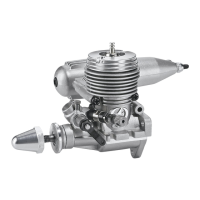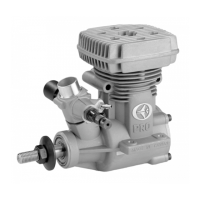2
Congratulations on your purchase of a Thunder Tiger model engine. All Thunder Tiger engines
have been designed to combine high performancewith easy handling and maintenance using
CAD computer technology. Major components of the engines are machined from the highest
quality materials using state-of-the-art CNC manufacturing techniques, resulting in consistent
high quality and reliability.
The PRO series engines are equipped with dual ball bearings, Schnuerle porting, a special ABN
type piston and cylinder sleeve, and automatic mixture control carburetors with safe angular
needle valve. The engines have been designed for both beginners and experienced flyers.
This engine will provide you with years of safe use, provided that you carefully follow these safety
instructions:
• This model engine IS NOT A TOY, but a powerful miniature engine that is capable of inflicting
damage to both people and property if misused.
• Always mount the engine securely in a test stand or high-quality engine mount. Never, ever
attempt to clamp your engine in a vise!
• Keep all spectators at least 20 feet away when operating your engine.
• Make sure that you use the correct propeller for your engine. See chart.
• Make sure that the propeller nut is securely fastened prior to each flight.
• Keep your body away from the path of the propeller when running your engine.
• Keep your hands away from the propeller, by using a “chicken stick” or electric starter to
start your engine.
3
Engine Crankshaft
Thread
Practical RPM Weight
(g/oz.)
0.365PRO-36
PRO-40
PRO-46
PRO-61
PRO-91
PRO-120
313.6 / 11.06
454.5 / 16.03
448.5 / 15.82
758.4 / 26.75
(*1)562.0 / 19.83
975.0 / 34.49
(*1)780 / 27.51
1.1 / 16,000
1.30 / 16,000
1.60 / 16,000
1.85 / 16,000
2.75 / 15,000
3.2 / 14,000
3.5 / 14,000
PRO-120RP
Item
No.
9130
9140
9141
9160
9190
9195
9196
Displacement
(cc/cu.in)
5.98 /
6.52 / 0.398
7.47 / 0.456
9.98 / 0.609
14.96 / 0.913
20.76 / 1.267
20.76 / 1.267
20.8 / 0.819
20.9 / 0.823
21.8 / 0.858
23.5 / 0.925
28.0 / 1.102
31.0 / 1.220
31.0 / 1.220
Specifications
• Make all carburetor adjustments from behind the propeller.
• Never use your hands or any other part of your body to stop the propeller. Do not throw
any object into the propeller to stop the engine. Stop the engine by removing the fuel line,
pinching the fuel line closed or closing the throttle barrel completely.
• Never use a propeller that is cracked, nicked or damaged in any way.
• It is recommended that you wear safety glasses when operating any model engine.
• Do not run your engine around dirt, sand or loose gravel. Such material can be thrown into
your eyes by the propeller, as well as damaging the engine if drawn into the carburetor.
• Take care to keep all loose clothing rags, tools etc. away from the propeller.
• Keep all fuel lines, glow clips, starter cords, etc. away from the propeller.
• Take care when handling your engine after it’s been running as model engines get very hot
during operation!
• Always operate your engine with proper ventilation. Model engines produce harmful fumes
when run in a closed room or confined area.
Important
An Introduction to PRO Engines
Bore
(mm/in)
17.6 / 0.693
19.0 / 0.748
20.0 / 0.787
23.0 / 0.906
24.3 / 0.957
27.5 / 1.083
27.5 / 1.083
Stroke
(mm/in)
2,000~17,000
2,000~17,000
2,000~17,000
2,000~17,000
2,000~16,000
1,800~15,000
1,800~15,000
UNF 1/4-28
UNF 1/4-28
UNF 1/4-28
UNF 5/16-24
UNF 5/16-24
UNF 5/16-24
UNF 5/16-24
OUTPUT
(BHP/RPM)
(w/muffler)
(*1)wo / muffler
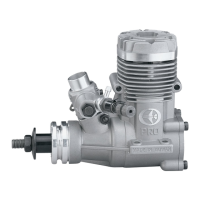
